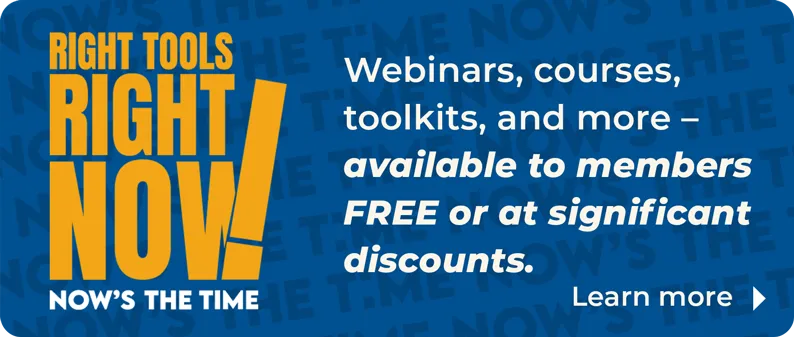Why REALTOR® associations should publish their own real estate news.
People don’t rely on national weather reports to plan a day outdoors, so why should they rely on national statistics to plan their home purchase or sale? This is the point the Massachusetts Association of REALTORS® makes on its consumer-focused Web site, www.marealtor.com, underscoring their message, “Real estate, like the weather, is local.”
Nationwide averages in home sales have nothing to do with your local market conditions, but without sources of local information, homebuyers don’t have an accurate barometer. Sure, they have local media, but because of drastic cutbacks in the news industry (the Chicago Tribune and LA Times are in bankruptcy), most real estate stories (with an increasingly negative bias) come from national feeds, such as the Associated Press or Reuters.
The Incomplete Picture of Indices
With little staff to investigate or report local statistics, the media turn to indices such as Standard & Poor’s Case-Shiller Index, Zillow’s Home Value Index, OFHEO, and other housing trackers for news. These broad indices agree that housing is in decline, but vary wildly on how much.
Why are the indices a problem for the real estate industry? Four reasons. First, they’re designed for investors, not consumers. Second, they don’t provide local information to aid consumers in their homebuying and homeselling decisions. Third, the information isn’t timely—lagging by more than a month to three months.
Last but not least, these authorities take attention away from the working real estate industry—your members.
With these indices, the consumer gets a partial picture, at best. For instance, Stand-ard & Poor’s Case-Shiller indices track same-sale homes, failing to take into account any new construction or homes that have sold only once. OFHEO tracks homes purchased with conforming loans or those refinanced through Fannie Mae and Freddie Mac, which are publicly held companies. Their index eliminates non-con-forming jumbo loans. Zillow needs the credibility of economic reporting to bolster its business model, yet it tracks only 125 metros, the most of any of the indices, according to Stan Humphries, Zillow chief economist.
That means that thousands of communities (mostly in inland America) aren’t represented. Further muddying the waters is the abundance of media guesswork involved in stretching data across undefined geographic boundaries.
These are just some of the factors that have led to the crisis of confidence that -exists among buyers and sellers.
The Bright Side
Consumers are rarely told anything positive. They don’t know that tax incentives can make homebuying a smart move even in a declining market, and a brilliant move in an accelerating economy. Home prices have rolled back to 2003 figures, affordability is the highest in a decade, inventories are highest since the recession ending in 1993, and interest rates have dropped to their lowest since the 1960s.
Stories about people losing their homes abound, but where are the news stories about the lender who went the extra mile to help a homeowner avoid foreclosure?
David Reed, CEO of CD Reed Mortgage Bankers, Austin, Texas, is baffled by the media’s seeming refusal to tell the positive side of the news. According to him, no one is telling the real story: that there’s mortgage money out there for those looking to buy within their means.
“In 2008, I’ve had the best year of my -career,” says Reed. “There’s plenty of -money for borrowing.”
If ever there is a time to buy, it’s now. But where will consumers get the story?
The Little Picture
The Oklahoma Association of -REALTORS® was among the first associations to introduce a positive homebuying campaign to provide local media with an alternative to national statistics.
“Good Thing You’re in Oklahoma” was introduced in a statewide initiative in February, 2008. Designed to provide current, relevant local housing data and to get local association leaders in front of the media, the campaign continues to be effective, says Lisa Yates, OAR executive officer.
“We went from seeing only national housing news being reported in the press, to seeing a constant follow-up with local numbers,” says Yates.
The campaign continued on the local level with “Good Thing You’re in Ada” and “Good Thing You’re in Ardmore,” with yard signs and window stickers for members’ cars.
Now the association is employing NAR’s Surround Sound campaign (Realtor.org/press_room/surroundsound), designed to bombard local media with positive—and accurate—news about local housing conditions. The campaign offers state and local associations a toolkit to get the word out to consumers about the opportunities for buyers in today’s housing markets and generate authentic -optimism.
“The presidents are making the rounds of the Rotary Clubs, PTAs, and other organizations to let people know what’s happening at the local level,” explains Yates, “while the members took the campaign and used it on blogs and Web sites.”
Screaming into the Wind
But it takes a willing media to cooperate. Terry Penza, president and CEO of North Shore–Barrington Association of -REALTORS®, Ill., says she’s been paying for reports from economist John Tuccillo and data--gatherer Claritas, but couldn’t get Chicago-area media interested in sharing the results with the public.
“I wanted to get the word out that things were nowhere near as bad in my area as in the national news,” says Penza. “The Tribune made it sound like sales are way down. Now, our prices are going down a little bit, but this isn’t California, Florida, or Las Vegas.”
To reach today’s younger homebuyers -directly, Penza says she “throws stuff” on YouTube and Facebook. After all, she says, “the average homebuyer is 30 years old—they’re not reading the paper anyway.”
Making Statistics Palatable
Mark Allen, CEO of the Minneapolis Area Association of REALTORS®, says he believes the media are capable of shifting their perceptions. Creating a for-profit company called 10K Marketing, MAAR has designed simple charts and graphs derived from MLS data for the media and for members to push out to consumers. The company is marketing its services to other MLSs and associations interested in making their data more consumer- and media-friendly, because no reporter wants to pore over complex MLS data printouts.
“That information is coming from a trusted source,” says Allen. “The media are calling us for numbers and they see these local and county numbers as very reliable. Historically, they haven’t come to us to ask for this in-formation.”
How have the media responded? “We have two large regional papers and dozens of smaller publications that are now using our resource for their micromarket areas. It’s shifted the press’ perception. They don’t look at us as purveyors of spin, they look at us as providers of accurate market information,” says Allen.
Jeremy Conaway, CEO of RECON Intelligence Services, a consulting group for associations and MLSs, says packaging statistics correctly is an opportunity to put associations and their members back in the spotlight, if done right. “Statistics are a bore for most people. You have to wrap the pill in the cheese to be swallowed.”
Associations have the pill. What they need is the cheese—e-magazines, newsletters, Web sites, market alerts, print magazines, done with color, style, and savvy editorial, says Conaway. “Make it fun and entertaining, as well as informative, and you’ll get people coming back,” he says.
If you can help your members communicate with consumers more effectively about the market, they’ll have no need to go anywhere else. When your members’ stock rises, yours does, too.
Here’s how to get the local word out:
Turn market news into a member benefit. Whether you hire a partner or consultant or gather MLS, jobs, and other data yourself, make it easy for your members to push out your message. Give your members news and information in an attractive format they can easily and proudly e-mail to their prospects, put on their Web sites, and incorporate into their presentations. Let them be your delivery system.
Turn market news into enjoyable reading for consumers. Behind all those numbers are neighbors. Make your statistics come alive with real examples of buyers and sellers. This will do wonders for making the associations and MLSs (and their members) appear more consumer-friendly.
Turn market news into a revenue generator. According to Borrell Associates, newspaper-owned Web sites beat local sites in advertising market shares in 2007, capturing 26.9 percent of the market. Now that they’re in trouble, you’re in a position to support your research, editorial, and graphics by grabbing advertising dollars, creating a source for non-dues revenue.
Turn the other cheek. Newspapers may not have supported you when you needed it, but that doesn’t mean you want to watch them go down in flames. You can still help each other. Make your market news available to your local media. It’s their decision whether to use it, but sooner or later consumers will begin to understand that the place to get fresh, local market-condition reports is from the local real estate association.
Turn on the spigot. The advantage you have over the national indices is the speed and accuracy of your data. There’s no reason you shouldn’t be sending out monthly or even weekly updates to your members to give to their consumers.
Turn your members’ markets around. It’s in your power to help your members inform consumers with actionable news and information to help them make buying and selling decisions. If your market is frozen with fear, break the ice with your data.








